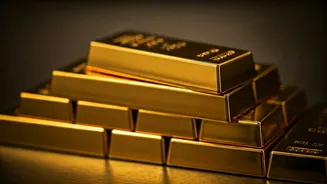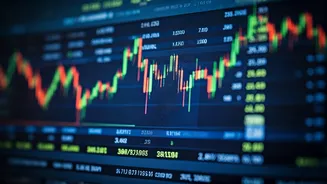Gold: A Timeless Treasure
Gold has a long and celebrated history, often seen as a symbol of wealth, security, and prosperity. In India, its significance extends beyond mere monetary
value, deeply woven into the fabric of culture, tradition, and celebratory events such as weddings. It's frequently gifted and passed down through generations. But with its enduring appeal comes the complex reality of fluctuating market prices. Factors like global economic trends, currency fluctuations, and geopolitical events can all influence gold's value. Understanding these forces is critical for anyone considering gold as part of their investment strategy. The price of gold isn’t just about the current market climate; it reflects a confluence of historical context, cultural significance, and economic factors.
Wedding Season's Influence
The wedding season in India is a major driver of gold demand. Weddings are frequently associated with the purchase of gold jewelry, from elaborate necklaces and bangles to smaller pieces like earrings and rings. This tradition significantly boosts gold consumption. As the demand surges, it directly impacts the market prices. With increased demand, prices typically rise. This is the simple economic principle of supply and demand in action. The wedding season, therefore, creates a distinct cycle within the gold market. Investors and buyers alike must consider this seasonal effect to gauge potential buying and selling opportunities. Recognizing these seasonal patterns enables investors to anticipate market trends, and to refine their strategies to match evolving demand.
Market Dynamics at Play
Analyzing the factors currently affecting the gold market is essential. Economic conditions, for instance, play a significant role. Inflation rates, interest rates, and the strength of the Indian rupee all exert considerable influence. When inflation rises, investors often turn to gold as a hedge against the diminishing value of their money. Conversely, when interest rates increase, the appeal of gold, which provides no immediate returns, might diminish compared to interest-bearing assets. Moreover, the worldwide gold market also contributes to the local market. International happenings can significantly affect pricing. Global economic instability can increase the demand for gold, as it is viewed as a safe-haven asset, driving up prices. All these dynamics intertwine, creating a constantly shifting market landscape.
Is Now the Time?
The question of whether now is the right time to buy gold depends entirely on a person's individual financial goals and risk tolerance. It's crucial to think about the long-term potential. Gold has historically preserved its value over long periods, making it an appealing choice for long-term investments. Potential buyers should consider this along with their personal financial plans. Consult with financial advisors to get personalized guidance based on individual circumstances. Diversification is another key element. Adding gold to a diversified portfolio can act as a buffer against market volatility. If you are already invested in other assets, it is important to balance your portfolio. Evaluate the current market conditions, assess personal financial capabilities, and seek expert advice before making decisions about gold investments.















